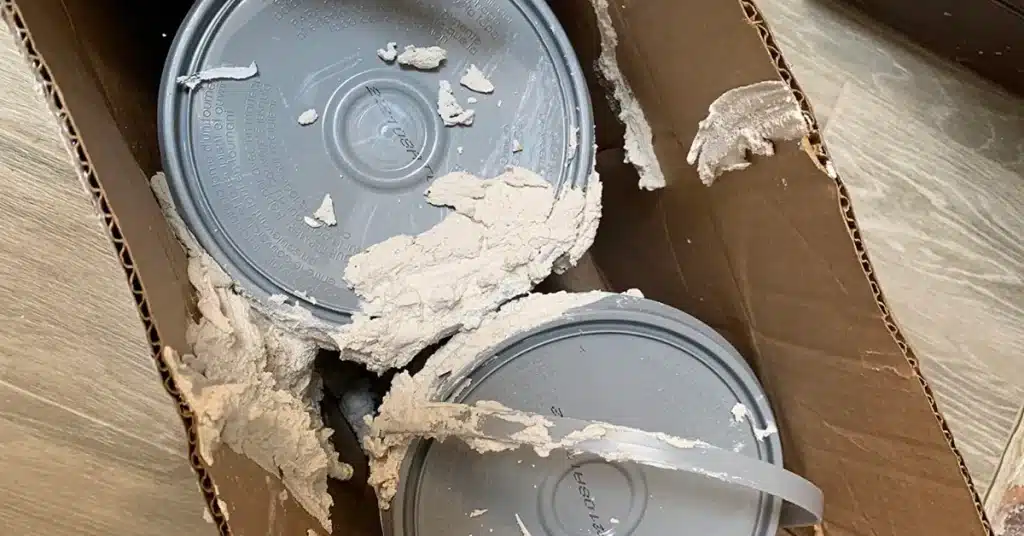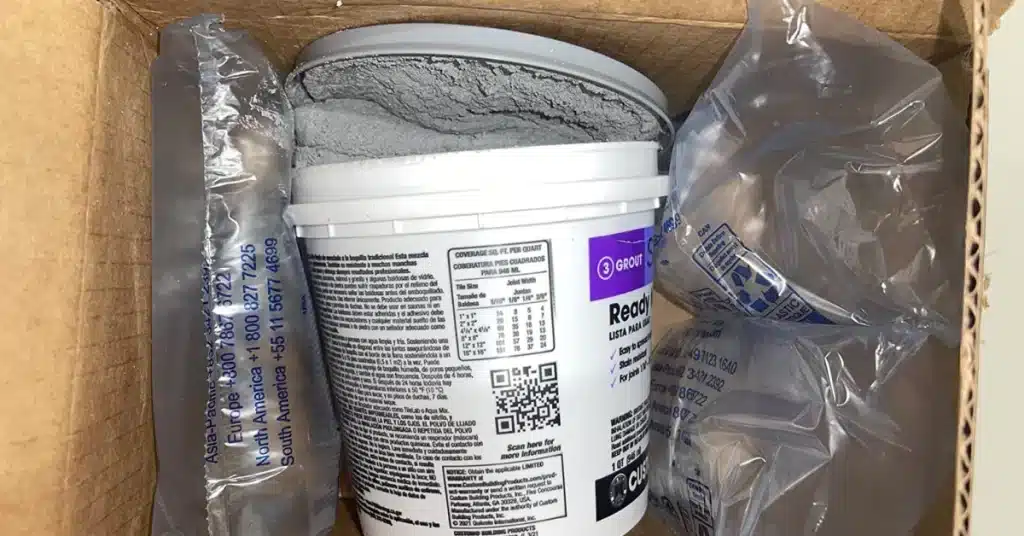Thinset is a cement-based adhesive that is used to attach tiles to surfaces. If you are planning to install tiles in your home, you may be wondering whether you should use white or gray thinset.
Dark-colored tiles are recommended to be set with a gray thinset, while light-colored tiles are recommended to be set with a white thinset. Both colors perform identically, so it’s really just a matter of personal preference and aesthetics.
In this article, I will examine white vs. gray thinset and will help you choose the right one for your tile installation.
Read More: Tile Adhesive vs. Thinset Mortar
White Vs. Gray Thinset
What is Thinset Mortar?
Thinset mortar is a mixture of sand, water, and cement that is applied between the tile and the substrate in a thin layer (no more than 3/16 inches thick). The thinset mortar creates a strong bond and prevents moisture and air from getting underneath the tile by acting as an adhesive and filler.
Thinset comes in two main colors: white and gray. The color of thinset doesn’t affect its performance or durability, but it can affect its look. It is recommended to use thinset that is the same or complementary color to the tile and grout.

When to Use White Thinset?
White thinset is usually better for tiling with light-colored or see-through tiles, like glass, marble, or white porcelain. It is a type of thinset that has been specially formulated to be white in color.
This thinset won’t show through or change the color of those tiles, so they’ll look nice and clean. If you use light-colored grout, white thinset will also work on dark tiles.
White thinset is made with white cement, which is more expensive than gray cement. So white thinset is usually more expensive than gray thinset. There are some areas where white thinset is hard to find.
When to Use Gray Thinset?
Gray thinset is usually preferred for installing dark-colored or opaque tiles, such as slate, granite, or gray porcelain. It is a type of thinset formulated to be grey in color.
Gray thinset will blend in with those tiles and hide any imperfections or gaps. It can also be used with light-colored tiles if you want to use dark-colored grout.
Gray thinset is made from gray cement, which is cheaper than white cement. Therefore, gray thinset is usually cheaper than white thinset. It is also more widely available than white thinset in most stores.

Read More: Masonry Cement Vs. Mortar Cement
Differences Between White Thinset and Gray Thinset
| White Thinset | Gray Thinset |
| Made with white cement | Made with gray cement |
| More expensive than gray thinset | Cheaper than white thinset |
| Creates a clean and uniform look | Creates a contrast or blends in with the tiles |
| Preferred for light-colored or transparent tiles | Preferred for dark-colored or opaque tiles |
| Harder to find than gray thinset in some stores | More widely available than white thinset in most stores |
How to Pick the Right Thinset Color?
Your choice of thinset color is determined by the type and color of your tiles and grout. The following guidelines can help you choose the right thinset color:
- If you are using transparent or translucent tiles, such as glass or mosaic, use white thinset to avoid altering their color or clarity.
- Using white thinset will create a seamless appearance when using light-colored tiles, such as beige or white porcelain. Gray thinset will create contrast with light-colored tiles.
- If you are using dark-colored tiles, such as black or brown slate, use gray thinset to match their color or white thinset to create contrast.
- When using multicolored or patterned tiles, use white or gray thinset depending on the dominant color of the tiles or the grout.
- Test a small area with both white and gray thinset before installing the whole project if you are uncertain about the color of the tiles or grout.
Can You Use Grey Thinset with Marble?
Can You Mix White and Gray Mortar?
Last Opinion
White and gray thinsets are both effective and durable mortars for installing tiles. Their main differences are their appearance and price.
Gray thinset is better suited to dark-colored or opaque tiles, while white thinset is better suited to light-colored tiles. The choice of thinsets should match or complement the color of your tiles and grout.
I hope this article about white vs. gray thinset has helped you understand the difference between them.

